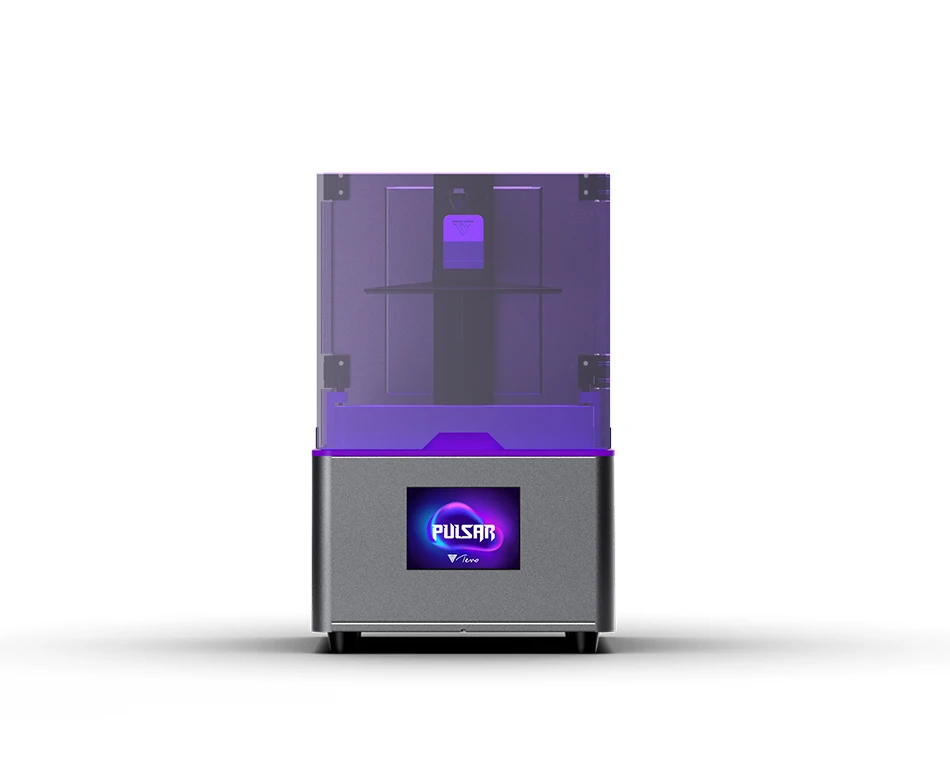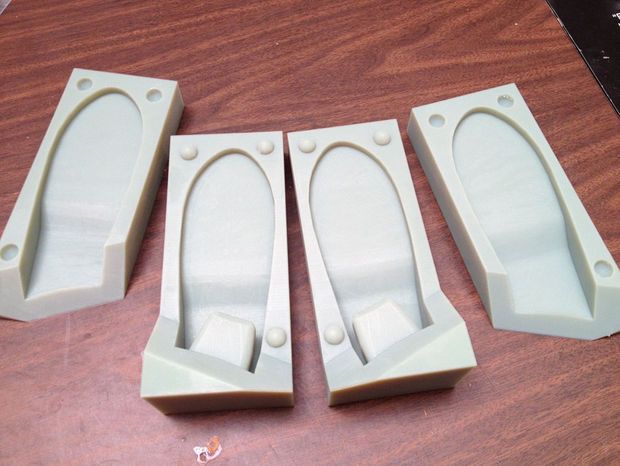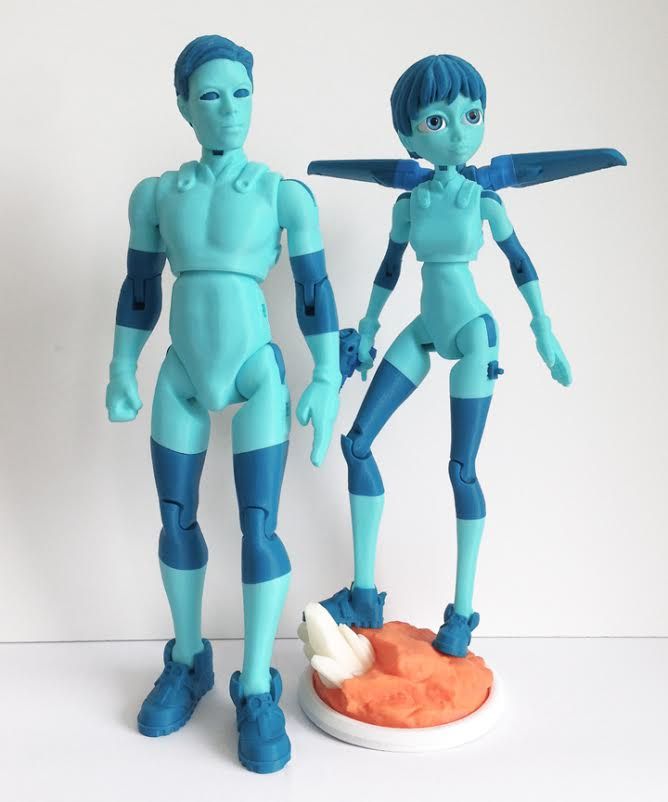Reddit 3d printing software
makingmodels - 3dprinting
- Making 3D Models for 3D Printing
- CAD /CAM/ Parametric Design
- Sculpting
- Hard-Surface Modelling
- 3D Scanning and Photogrammetry
- Generative Design & Topology Optimization
- The importance of manifold
- Tutorials for goals
| This page is incomplete. You can help by expanding upon it. |
|---|
| If you've not contributed to this wiki before, some guidance and help can be found on this page: How to contribute to this wiki. |
Can't find what you want online? Why not design and make it? Model-making software (for printing) is split into a few main categories, depending on your goal:
Full-resolution, printable copy here
CAD/ CAM/ Parametric Design is best suited to dimensioned objects, functional objects, fitted parts. Fusion 360 is the community favourite in this category (free for non-commercial use, startup exceptions available).
Some tutorials can be found here: Lars Christensen and Makers Muse
Sculpting is for making organic shapes, soft-surfaces, people, animals, terrain. Sculpt GL is the easiest (and free/open source) way to get started.
Hard-Surface Modeling is best for making non-functional inorganic shapes hard/ flat surfaces, controlled curves. Tinkercad is the easiest way to get started in this space, and Blender is another, more advanced (free/open source) way to go about making this style of mode. Blender Guru has made a good series of tutorials. 3D Printing Professor has created a series for the absolute beginner with a focus on designing for 3D printing.
Scanning and Photogrammetry are also popular methods of generating a 3D model from real life objects. The easiest to get started is using AliceVision.
Generative Design and Topology Optimisation utilise a computer to either generate or optimise a design based on various constraints such as load and fixing points.

These are just the top pics, more options are discussed below, please note that this list is not intended to cover every modelling application, only those that are free/popular with redditors. If you want a more detailed list you can check out the reprap software list or head over to /r/3Dmodeling.
This image explores many open source options, and /u/morphfiend put together a wonderful collection of tutorials for many of the programs discussed on this page.
CAD heavily excels with mechanical designs, where the object is defined by measurements, angles, tolerances, quicker to revision
| Program | OS | Price | Notes/Tutorials |
|---|---|---|---|
| Onshape | Browser | free for public documents with a paid option for private documents. | Some tutorials, Tech-Tips, and CadSessions |
| Fusion 360 | free for non-commercial use, startup exceptions available | Some tutorials can be found here: Make Anything, Lars Christensen, Makers Muse, Start with the basics, Quick Tips & Best Practices, Fusion 360 in 90 minutes, Autodesk Academy and Fusion 360 Parameters, how to make parametric Lego pieces in fusion 360 | |
| FreeCAD | free Open Source | Parametric CAD program in active development. Works pretty much like Fusion360 but completely offline. Can be scripted with Python. Paul Randall, FreeCAD tutorials, cad1919, Invent Box Tutorials Works pretty much like Fusion360 but completely offline. Can be scripted with Python. Paul Randall, FreeCAD tutorials, cad1919, Invent Box Tutorials | |
| DesignSpark Mechanical | Free to use | mechanical modelling tool. | |
| OpenSCAD | Open source | Syntax based modelling (describe your model in a computer language, the computer renders it. Note: SCAD is not an NP-complete programming language). Cheat-Sheet, Beginners Tutorial, Paul Randall, | |
| SolidPython | Open source | Allows 3D models to be written as python programs, the output is OpenSCAD. The advantages of using python are that the full features of a modern language (including OO programming techniques) can be used. | |
| Autodesk Inventor | Natively supports STL's, but most often used for subtractive manufacturing methods | ||
| Rhino 3D | Windows, Mac | Paid | Tutorials: Basics, Preparing for 3D Printing, Prepare your model for 3D Printing with Rhinoceros, Advanced Rhino and Grasshopper recorded college classes |
| STLBuilder | Open source | Generate models using mathematical formulas for the position of points in space.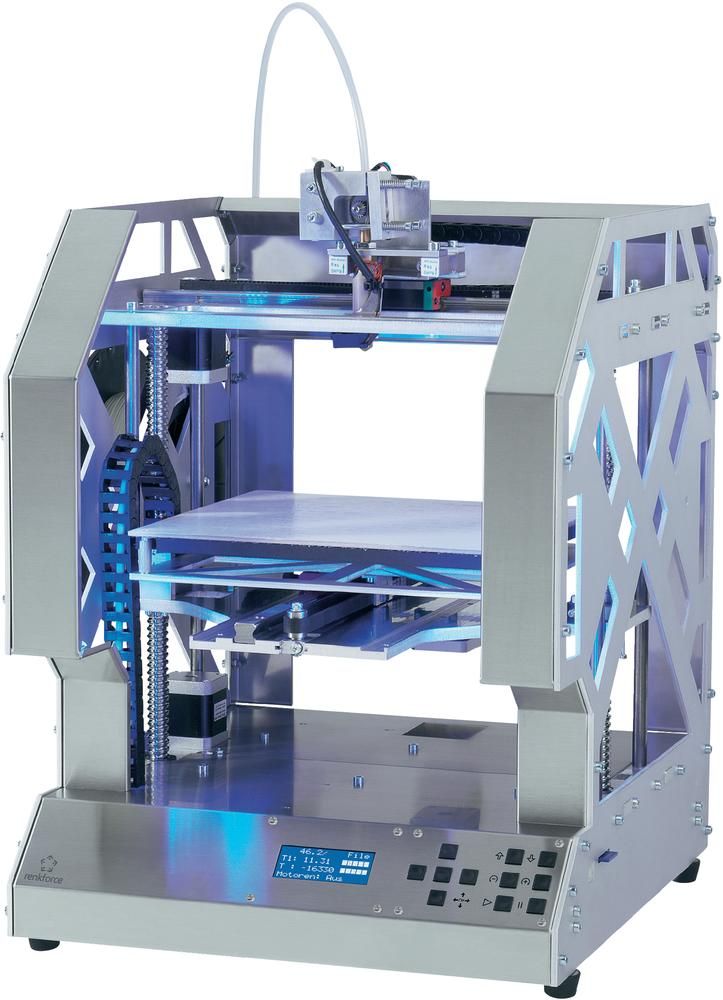 Then combine the model parts in a Javascript (the code blocks themselves are again model parts + recursion supported). STL download. Then combine the model parts in a Javascript (the code blocks themselves are again model parts + recursion supported). STL download. | |
| Solid Edge | Windows | Community Edition is free for non-commercial use. | Has the best symmetry and feature recognition for editing STEP files from other sources. Most editing is done in 3D space instead of traditional Sketch->Feature workflow |
3D sculpting, think of having a virtual ball of clay, your pinching it, smoothing it, pulling it to make something heavily organic looking such as a person, a creature, etc
| Program | OS | Price | Notes/Tutorials |
|---|---|---|---|
| Sculpt GL | browser | Free digital clay sculpting | |
| Sculptris | Beginner/kid friendly. pixologic (near the bottome of the page), Mr.Brooks, Sculptris cheat sheet pixologic (near the bottome of the page), Mr.Brooks, Sculptris cheat sheet | ||
| Meshmixer | Free software to combine/modify models, generate custom support structures, and sculpt as though with clay. [Maker's Muse- https://youtu.be/C9VDKb3W4qA), Teaching Tech, Sculpteo | ||
| ZBrush | [ZClassroom- https://pixologic.com/zclassroom/), [Zbrushtuts- http://zbrushtuts.com/), [Zbrush for beginners- https://www.youtube.com/watch?v=PO--0h8XHiw), [Edge-CGI 3D tutorials- https://www.youtube.com/user/Edge3Dcgi/playlists), [Twitch for Pixologic- https://www.twitch.tv/pixologic), flippednormals | ||
| Blender | free and open source | Grant Abbitt -2.7, YanSculpts -2.7, Flipped Normals -2.8 | |
| 3D-Coat | alienminefield, 3dcoat learn, gamedev the pipline, Pluralsight (Paid) | ||
| Strata Sculpt3d | browser | free | Appears to be a spin-off of SculptGL? |
| Various Programs | Gnomon workshop (Paid) | ||
| Sculptura | Mac, IOS | Paid (low cost) | robust clay sculpting. Particularly recommended with iPad pro+ apple pen Particularly recommended with iPad pro+ apple pen |
3D modeling when you think of those interesting artistic buildings or those pieces of terrain for on a game table, 3D modeling was behind the scenes, not as heavily defined process as CAD
| Program | OS | Price | Notes/Tutorials |
|---|---|---|---|
| Tinkercad | Browser | Beginner/kid friendly | |
| Blender 2.7 | free and open source | BlenderGuru, Blendtuts, CGCookies Blender Basics,GameDevTV Complete Blender Course(Paid),Blender Tutorial, Blender Fundamentals, Making Spiralised Vases | |
| Blender 2.8 | Fundamentals, gabbit comprehensive beginners guide, YanSculpts, BlenderGuru 2. 8, CG Masters (Paid), 3D Printing Professor, flipped normals, making a lightsaber, 3D Printing Professor Absolute Beginner's Guide 8, CG Masters (Paid), 3D Printing Professor, flipped normals, making a lightsaber, 3D Printing Professor Absolute Beginner's Guide | ||
| Orchard | Broswer | Beginner/kid friendly | |
| 3D Builder | MS 10 | Beginner/kid friendly piece of software which is also great for cutting or joining models. Great auto repair functionality and can convert images (such as logos) into 3D models | |
| Sketchup | Browser | Sometimes produces non-manifold models | |
| Makers Empire 3D | iPad/Android/Mac/Win. | Free to use with a premium option. | Touch-optimized software - usable by students as young as 4. |
| 3DS MAX | TopHATTwaffle, Autodesk 3ds max learning channel, Autodesk getting started in 3ds Max, Edge3Dcgi, Arrimus 3d |
3D Scanning and Photogrammetry are used to create digital 3D models directly from real-world objects.
| Program | Style | OS | Notes/Tutorials |
|---|---|---|---|
| Meshroom/ AliceVision | Photogrammetry | Windows, Linux | Tutorial, video tutorial |
| 3DF Zephyr | Photogrammetry | ||
| Lhun's solution | Photogrammetry | Windows, Linux | |
| FabScan | Laser | Raspberry Pi | Open source raspberry pi based laser scanning system |
| Strata Foto 3d CX | Mac, Windows | Free trial | |
| OpenScan | Lowcost, open source DIY scanner | ||
| Regard3D | Mac | ||
| AAScan | Photogrammetry | Android | Thingiverse page.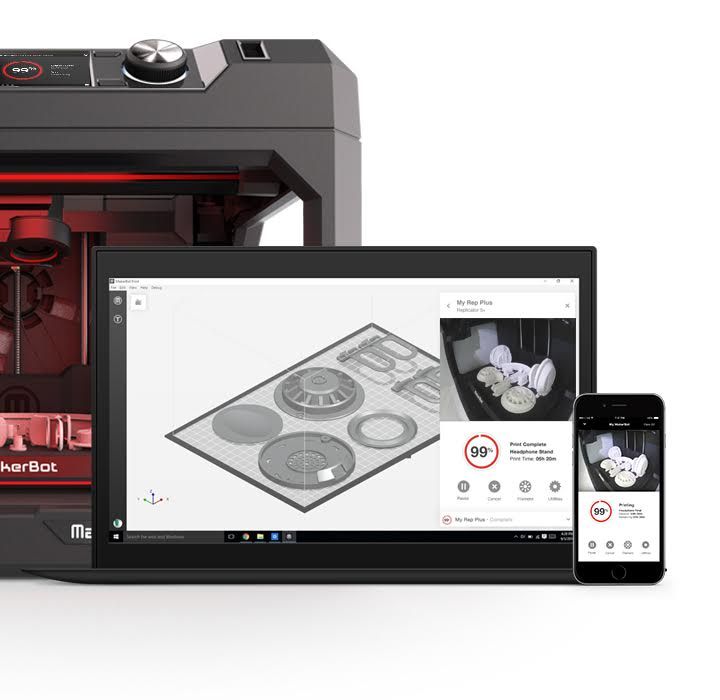 App and printable files made by /u/redditNewUser2017 App and printable files made by /u/redditNewUser2017 |
Generative Design and Topology Optimisation utilise a computer to either generate or optimise a design based on various constraints such as load and fixing points.
| Program | Style | OS | Notes/Tutorials |
|---|---|---|---|
| Fusion 360 | free for anyone earning less than 100k per yr | ||
| Altair | free for students |
When selecting a model you need to ensure they are manifold, meaning they don't have tiny gaps or reversed faces. Here and here are guides on fixing them. You can also try these free, automated services; Netfab, and Microsoft's tool to repair models. Or try importing it into Sculpt GL and voxel remeshing (manifold tris) under the topology category.
- Convert raster graphic or logo like a JPG or PNG into 3d model. Non-windows users can use this site
- Making Spiralised Vases
- Make topographic maps by using the height maps generated by jthatch and then importing the image into cura.
- Converting brain scans to stls. Tutorial and can also use InVesalius to convert the DICOM file
- Snap fit joins
- How to render sliced models
- Splitting large/difficult models to make them printable and adding connectors can be done in Meshmixer, and Netfab
Reddit User Creates Incredible Artwork by Photographing the Insides of 3D Printed Vases - 3DPrint.com
The Exteriors of Martin’s Vases
It’s really incredible what 3D printing is doing to open up artists’ imaginations. We’ve seen so many incredible uses of 3D printing in the field of art that it’s nearly impossible to cover them all. What the technology does is enable the ideas within an artist’s mind to transform into a 3D model on a computer screen, and then appear in the physical world via a 3D printer.
Sometimes art is not pre-planned; instead it’s spawned by an action by its creator which had no artistic intentions whatsoever. Many of the most famous pieces of work initially started out in the minds of artists in a completely different form. This is the case with several pieces of 3D printed artwork created by a man named Joshua Martin, not exactly an artist per se, but his work has created quite the buzz on Reddit this week. The subject of his work? 3D printed vases, but not in the way you are likely imagining.
“I was printing some vases to test how well the Rostock Max V2 would do with a single wall object and at different layers,” Martin explained to 3DPrint.com. “Some are at .2, some .3 mm, etc, to see how it would hold up. After printing some of the vases I was testing how well they would hold water and filled them up. They quickly drained out. I couldn’t see the holes by eye, so I held them above a bright LED lamp I have and noticed how cool the effect was inside of the vase.
I quickly started looking for more designs that had a cool effect, preferably smaller at the base, coming up to a wider mouth. This gave them a very cool forced perspective, making them look larger, almost otherworldly, than they really were.”
Martin proceeded to take photographs of his creations with the backlight in place, and posted them on Imgur before eventually sharing them on Reddit. The images that came out were quite extraordinary. In fact, unless you are told what the photos are depicting it would be a stretch for anyone to guess what they actually were. Whether you see a tunnel within a futuristic spacecraft, an alien lair, or perhaps some foreign creature that’s yet to be discovered, Martin’s work sets the imagination wild.
Martin pulled the vase designs from Thingiverse here and here, and made sure to print them with very thin bases in order to let the light shine through adequately. He used a Rostock Max V2 to print them all out. As for the camera and lighting, he simply used his iPhone 6 to take the photographs and a very bright LED light as a backlight.
As for Martin’s future ambitions, he explained to us that he’s “fascinated with the growth of 3d printing” and has been approached by other companies wanting to partner with him on various projects. He also informed us that he has other ideas for projects within the 3D printing space that he will hopefully share in the near future.
Have you done anything similar to what Martin has? Feel free to let us know in the 3D printed Vase Tunnel Art forum thread on 3DPB.com. Check out some additional photos of Martin’s 3D printed vase interiors below.
Stay up-to-date on all the latest news from the 3D printing industry and receive information and offers from third party vendors.
Tagged with: 3d printed art • 3d printed inside vases • 3d printed vases • art • iphone 6 • photographs • photography • reddit • thingiverse • vase art
Please enable JavaScript to view the comments powered by Disqus.
Various file formats for 3D printing・Cults
With the development of digital technology, 3D printing has become much more accessible today. Individuals and professionals can have their own equipment and make various print models. All that is required is a good understanding of the basic concepts, especially in relation to the respective file formats. Indeed, depending on the field and for historical or practical reasons, certain file formats are preferred for 3D printing. Here are the most common 3D printing formats and their main characteristics.
Individuals and professionals can have their own equipment and make various print models. All that is required is a good understanding of the basic concepts, especially in relation to the respective file formats. Indeed, depending on the field and for historical or practical reasons, certain file formats are preferred for 3D printing. Here are the most common 3D printing formats and their main characteristics.
STL is short for "Stereolithography", one of the oldest file formats for 3D printing. Developed in the late 1980s, this type of format is still widely used today. It describes the surface geometry of a 3D object without displaying color, texture, or other attributes. The STL format has the ".STL" extension. These files are generated by computer-aided design (CAD) software. Programs such as FreeCAD, Blender, MeshLab, MeshMixer, SketchUp, SculptGL, and 3DSlash can be used to edit and repair STL files.
The STL file simplifies a 3D surface into a "tessellation", a series of small triangles that increase in number when it is necessary to represent and recreate curved surfaces as best as possible.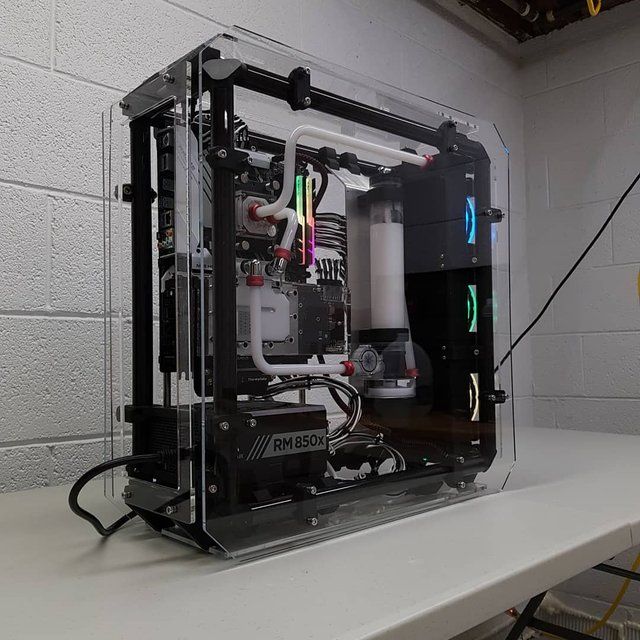 When a large number of triangles need to be used, the size of the 3D model STL file increases rapidly.
When a large number of triangles need to be used, the size of the 3D model STL file increases rapidly.
The OBJ file format is also very popular in the 3D printing industry. Its extension is ".OBJ". It has the advantage that it also encodes color and texture information, which is stored in a separate file with a ".MTL" extension. OBJ files allow the use of non-triangular faces, with one face adjoining another. They can be opened with programs such as Autodesk Maya 2013, Blender and MeshLab .
Developed in the 1990s, 3DS is a file format that stores only the most basic information about geometry, appearance, scenes, and animation. It allows you to save properties such as color, material, texture, transmissivity, etc. With the ".3DS" extension, this 3D printing file format also has the advantage that it can be read by most programs on the market, such as 3dsMax, ABViewer, Blender, MeshLab, messiahStudio, Rain Swift 3D, SketchUp, TurboCAD etc.
An SLDPRT file or its .SLDPRT extension is a 3D printing image format used by the SolidWorks CAD software. It contains a 3D object or "part" that can be combined with other parts into a single ".SLDASM" assembly file. SLDPRT files are usually opened with the SolidWorks program. However, they can be viewed using SolidWorks eDrawings Viewer, Autodesk Fusion 360, Adobe Acrobat 3D, Acrobat Pro 9 or later .
The SCAD format (.SCAD extension) is generated by OpenSCAD, a freeware modeling program used for various 2D and 3D projects. The SCAD file can be used to design 3D objects, specifying the object's geometry and positioning information. It can only be opened with OpenSCAD .
The .BLEND format is an extension used for 3D animation and projects designed with Blender's 3D modeling tool. This file type can contain multiple scenes as well as all project elements such as objects, textures, 3D meshes and real-time interaction data, sounds, lighting data, animation keyframes, display layouts, and interface settings. Please note that only Blender can work with this 3D file format.
Please note that only Blender can work with this 3D file format.
The 3MF file (.3MF extension) is used by various design programs to save 3D models for printing. This format includes model, material, and property data compressed using ZIP compression. 3MF files also store a print ticket, a thumbnail image, and one or more digital signatures. They can be opened with programs such as Microsoft 3D Builder, Microsoft Paint 3D, Dassault Systemes SolidWorks, Dassault Systemes CATIA, McNeel Rhino, PTC Creo and Ultimaker Cura .
The .GCODE file contains commands that define how the 3D printer should print. It stores instructions such as print speed, set temperature, and where to move print items. This 3D file format is created with cutting software such as Simplify3D and Slic3r. Reading can be done with Simplify3D, as well as Blaze3D, GCode Viewer and NC Viewer .
A .SKP file is a 3D model format created by SketchUp. This takes into account wireframes, textures, shadows, and edge effects. This file type is also used to store components that will be inserted into the document. Of course it can be opened with SketchUp, but also with programs like IMSI TurboCAD Pro or Deluxe, Okino Computer Graphics PolyTrans, ACCA Edificius and Trimble 3D Warehouse .
This takes into account wireframes, textures, shadows, and edge effects. This file type is also used to store components that will be inserted into the document. Of course it can be opened with SketchUp, but also with programs like IMSI TurboCAD Pro or Deluxe, Okino Computer Graphics PolyTrans, ACCA Edificius and Trimble 3D Warehouse .
FBX is a 3D printing file format popular in the film and video game industry. Developed by Kaydara and acquired by AutoDesk, it supports geometry and appearance properties such as color and texture, as well as skeletal animation and morphs. AutoDesk will use the ".FBX" FBX file as an interchange format for its software portfolio such as AutoCAD, Fusion 360, Maya, 3DS Max, etc.
Other file types are not exclusive to 3D, but are regularly used in the field.
A .RAR file is an archive containing one or more compressed files. The compression ratio of this format is greater than that of the classic ZIP compression. It is used to compress files to reduce their size for easier transportation and storage. You can extract files from RAR archive using various unpacking programs such as RARLAB WinRAR, Corel WinZip or B1 Free Archiver .
It is used to compress files to reduce their size for easier transportation and storage. You can extract files from RAR archive using various unpacking programs such as RARLAB WinRAR, Corel WinZip or B1 Free Archiver .
.DWG files are databases of 2D or 3D models created in AutoCAD. They consist of information about the vector image and metadata that describes the contents of the file. There are many utilities available to open this file format, including: Autodesk Auto CAD, Autodesk Inventor, Autodesk Design, Autodesk DWG, AutoDWG DWGSee, CADSoftTools ABViewer, Canvas X, Adobe Illustrator, Bricsys Bricscad, etc.
Used in 3D editing programs such as Adobe Photoshop and Autodesk Maya, the .MTL format is used to store material settings. This file is stored along with another in .OBJ format and is used to describe how textures should be applied and the 3D coordinates they should be applied to.
This page has been translated using machine translation. Suggest the best translation
Suggest the best translation
Previous
ShareNext
Similar publications
Since their invention, 3D printers have proven that printing many objects is much more efficient than conventional manufacturing techniques. However, calibration is required for optimal performance when printing 3D parts. Many 3D printer owners find this procedure tedious and time-consuming. However, it is much easier than it seems if you know the right tips on how to do it. Cults3D presents the various steps you need to follow in order to successfully calibrate your printer.
Read more The plate is one of the most important parts of a 3D printer. For optimal printer performance, it must be properly cleaned after each print session. Traces of the thread are deposited on it over time. While cleaning a 3D printer plate is not a difficult task, it can quickly become one if you don't have an effective method or the right cleaner. How to clean this important part of the 3D printer? We invite you to identify the most effective methods.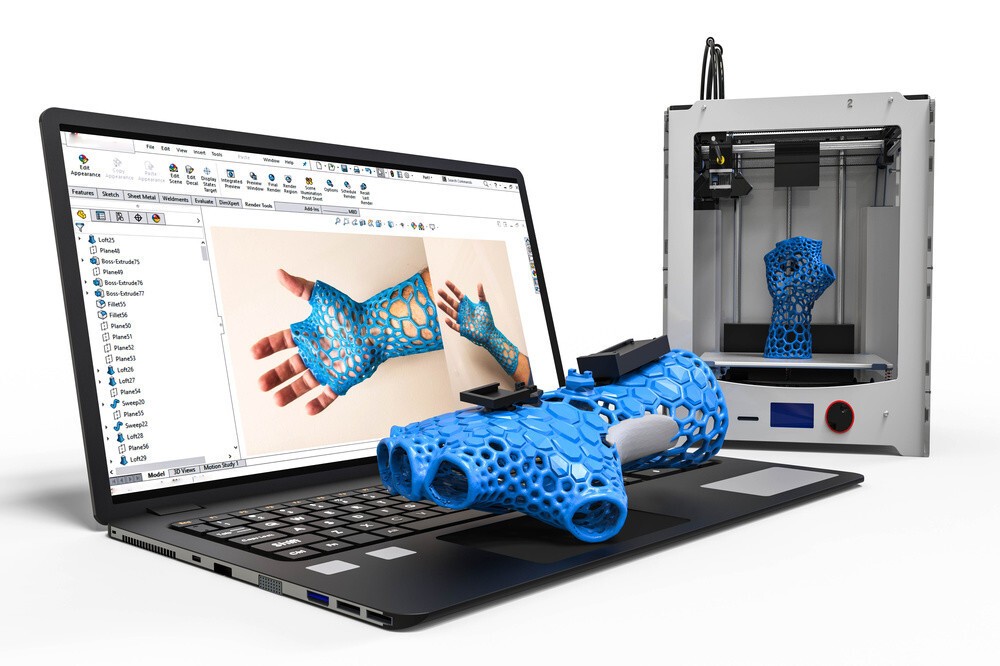
A Reddit user showed an algorithm that turns "flat" cities from Google maps into 3D models with life simulation
Technologies
Maxim Drukovsky
With the help of artificial intelligence, the program not only repeats the real location, but also "revives" it due to passers-by and traffic.
Reddit user Repok has been sharing demos of the SpirOps Crowd project, where he has been developing since the beginning of autumn. The algorithm, using procedural generation, creates 3D city models based on open data and Google maps, and then “inhabits” them with people and vehicles. The author of Denis Sexy IT channel Denis Shiryaev drew attention to Repok posts with examples.
The Crowd algorithm has been developed since 2007 to realistically simulate city life. With the help of artificial intelligence, the project allows you to "populate" the virtual space with residents in just a few hours. At the same time, the generated crowd does not behave randomly, just wandering around the location - everyone has a well-thought-out system of behavior, from interaction with the environment to internal motivation and socialization.
At the same time, the generated crowd does not behave randomly, just wandering around the location - everyone has a well-thought-out system of behavior, from interaction with the environment to internal motivation and socialization.
City life simulation example
Algorithm evolution in recent years
In November, Repok showed several videos with an updated algorithm. To demonstrate his work, the author used a copy of a real city - it was also generated automatically. Using the example of Paris, he created a 3D model based on Google maps and open data. For example, buildings are shaped by their height, shape, and year of construction (different textures are applied to the façade depending on the era).
For example, the developer has created a copy of the square, near which he lived for five years. Repok simply selected the desired area on the map, after which, in a few steps, a location model was formed with passers-by and traffic on the roads. According to the author, he manually added only the fountain in the center.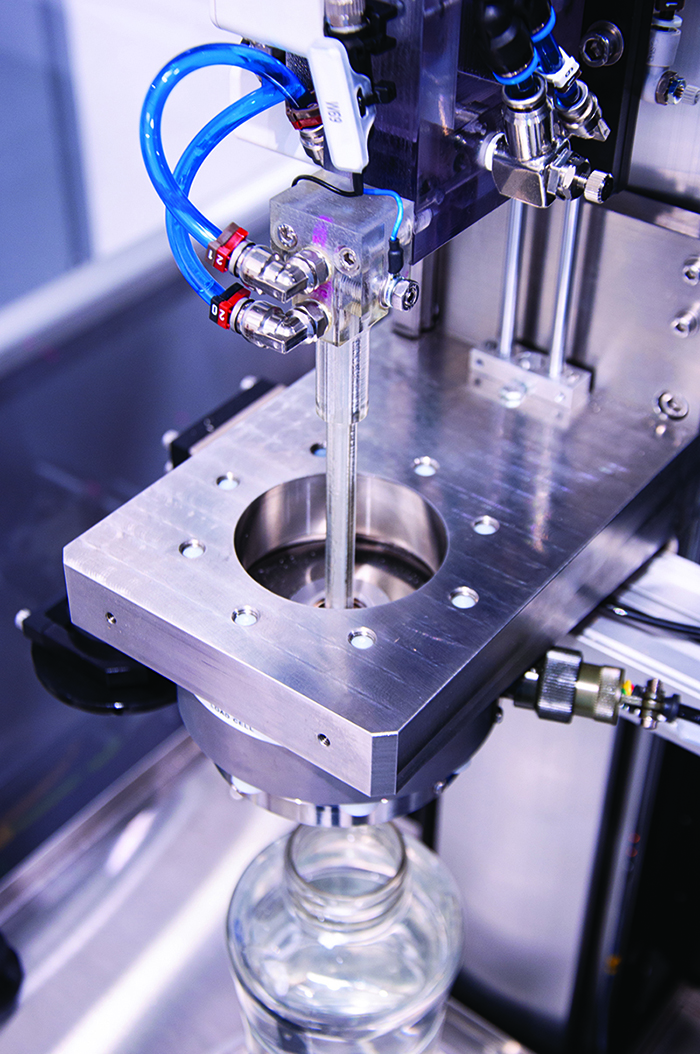
In the second video, the author generated several neighboring locations of Paris - he also selected the whole district and compared the resulting result with the real panorama of the city. The appearance of the buildings is set by the algorithm independently, so it is still impossible to achieve absolute accuracy and attention to detail, but the algorithm repeats the general silhouette of the streets almost unmistakably.
Although, according to Repok, now the project is aimed more at life simulation, in the comments, many noted the prospects of the algorithm in the gaming industry. Users compared clips with Parisian districts to the city-building simulator Cities Skylines and the latest part of the flight simulator from Microsoft, in which the entire planet is similarly generated for the player to explore.
How the new Microsoft Flight Simulator works with a copy of the planet from the "cloud" and cities from AI. Review and interviews with the authors
1:1 scale Earth created with neural networks and realistic flight even for those who don't know anything about aviation.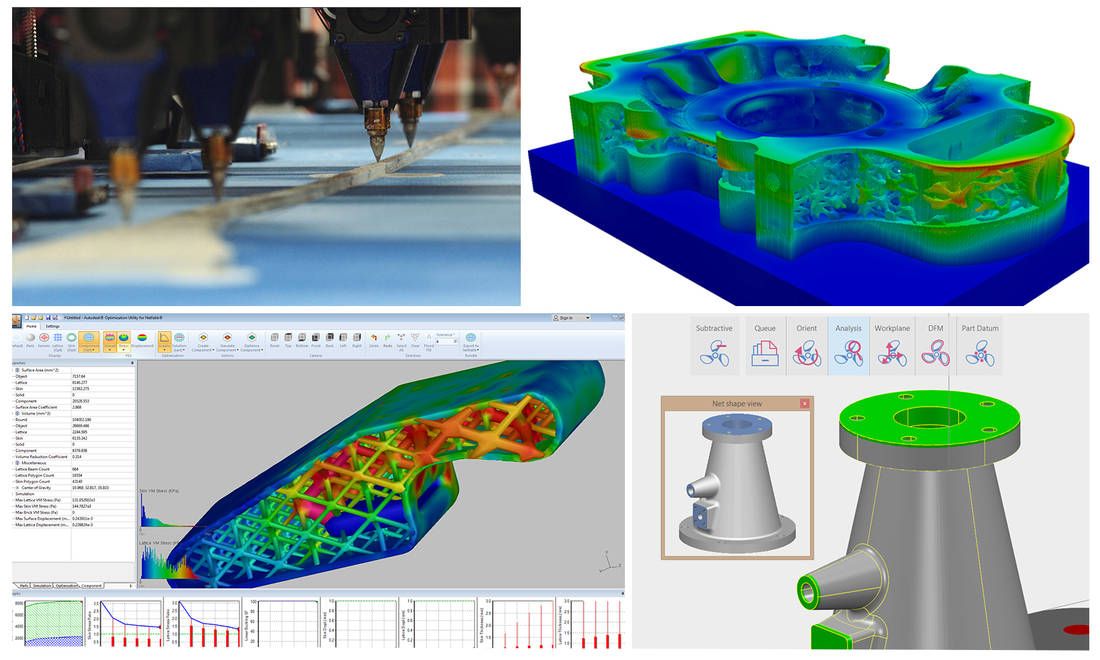


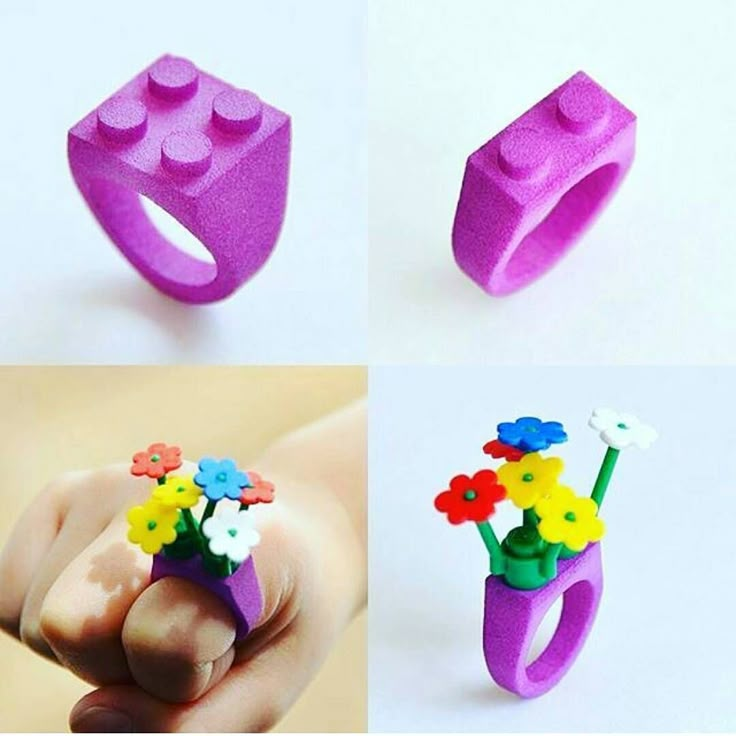

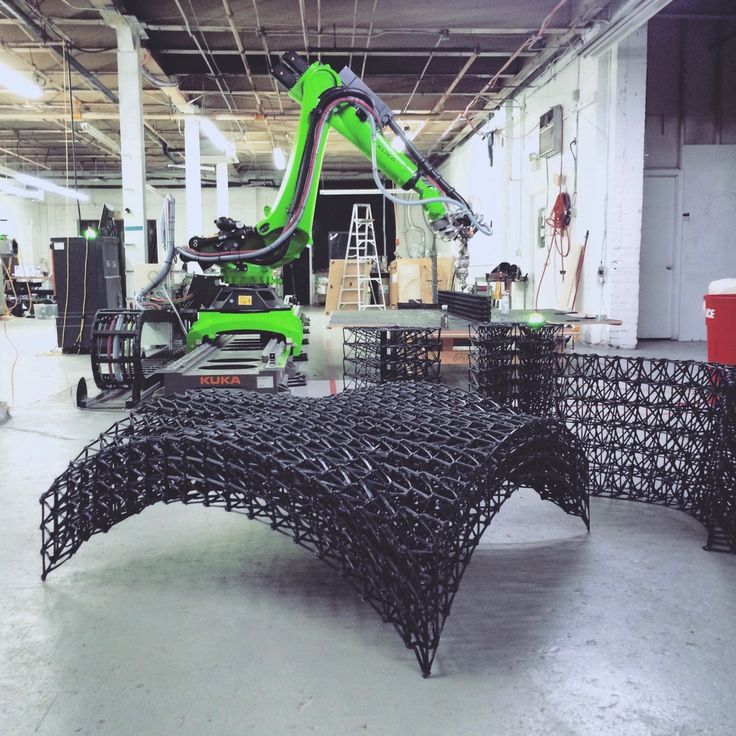
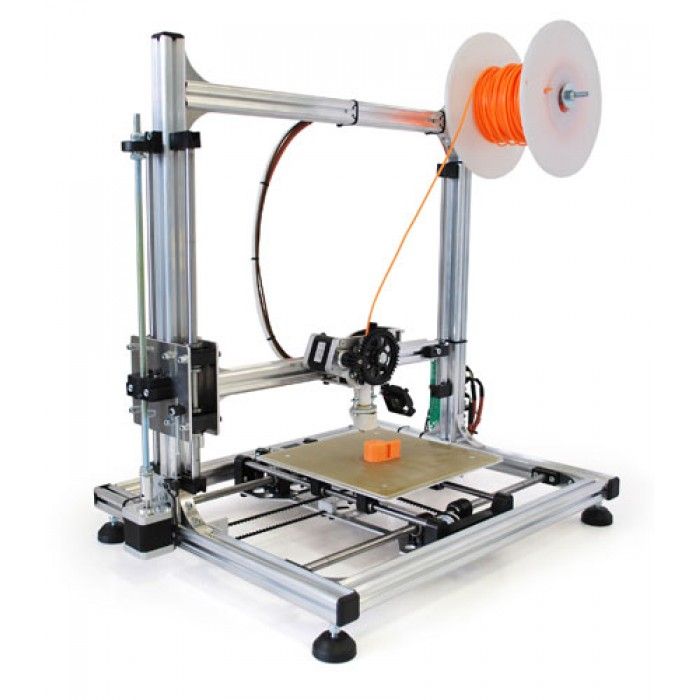

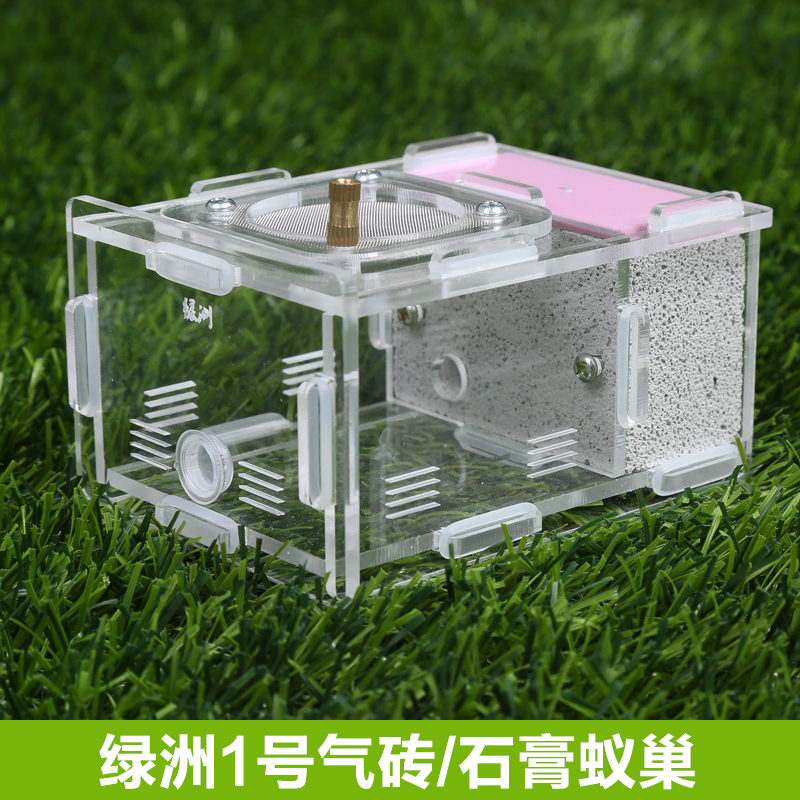
:quality(80)/images.vogel.de/vogelonline/bdb/1696600/1696673/original.jpg)
